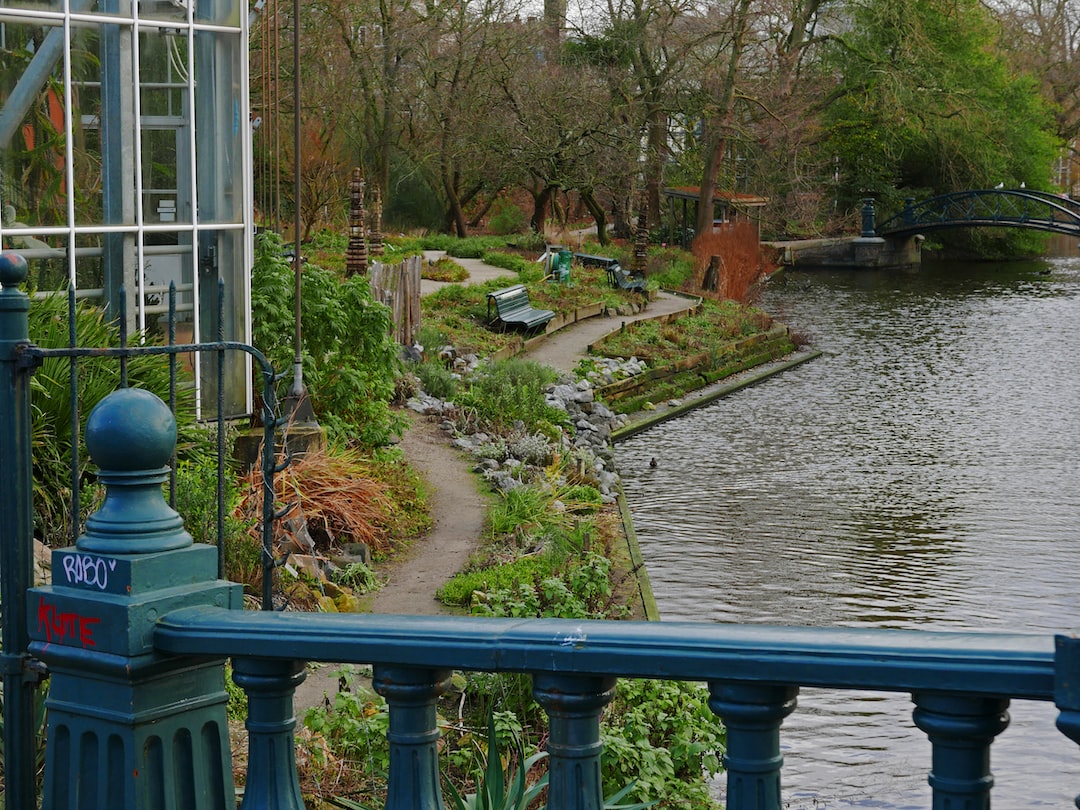Determinate vs. Indeterminate Tomato Plants: Understanding the Key Differences

Tomato plants are a popular choice for home gardeners due to their versatility and delicious fruit. They can be grown in gardens, containers, or even hanging baskets, making them suitable for any size of space. However, when it comes to choosing the right type of tomato plant, it is important to consider factors such as growth habits, size and yield, lifespan and harvesting times, as well as personal preferences and goals. In this article, we will explore the differences between determinate and indeterminate tomato plants and help you decide which type is best for you.
Key Takeaways
- Determinate tomato plants have a compact growth habit and stop growing once they reach a certain height.
- Indeterminate tomato plants continue to grow and produce fruit throughout the growing season.
- Determinate tomato plants typically have a smaller yield than indeterminate tomato plants.
- Determinate tomato plants have a shorter lifespan and are harvested all at once, while indeterminate tomato plants have a longer lifespan and are harvested over a longer period of time.
- Pros of growing determinate tomato plants include their compact size and ease of harvesting, while cons include their smaller yield and shorter lifespan. Pros of growing indeterminate tomato plants include their high yield and longer lifespan, while cons include their larger size and more complex maintenance requirements.
Overview of Determinate and Indeterminate Tomato Plants
Determinate and indeterminate tomato plants are two main types of tomato plants that differ in their growth habits and fruit production. Determinate tomato plants are often referred to as bush tomatoes because they have a compact growth habit and tend to stop growing once they reach a certain height. On the other hand, indeterminate tomato plants are known as vining tomatoes because they continue to grow and produce fruit throughout the growing season.
Growth Habits of Determinate and Indeterminate Tomato Plants
Determinate tomato plants have a predetermined growth pattern, which means that they grow to a certain height and then stop growing. This makes them ideal for gardeners with limited space or those who prefer a more compact plant. They typically reach a height of 3-4 feet and do not require much pruning or support. However, it is still important to provide some support for determinate tomato plants to prevent the branches from breaking under the weight of the fruit.
Indeterminate tomato plants, on the other hand, have an indefinite growth pattern and can continue to grow and produce fruit until they are killed by frost or disease. They can reach heights of 6-10 feet or even more in some cases. Due to their vigorous growth, indeterminate tomato plants require regular pruning and support to keep them under control and prevent them from sprawling all over the garden. This can be done by staking, caging, or trellising the plants.
Size and Yield Differences Between Determinate and Indeterminate Tomato Plants
| Plant Type | Average Size (inches) | Average Yield (pounds) |
|---|---|---|
| Determinate | 24 | 8 |
| Indeterminate | 48 | 12 |
Determinate tomato plants are generally smaller in size compared to indeterminate tomato plants. They have a more compact growth habit and tend to produce fruit in a concentrated period of time. This makes them ideal for gardeners who want a large harvest all at once, such as for canning or preserving purposes. However, the overall yield of determinate tomato plants is usually lower compared to indeterminate tomato plants.
Indeterminate tomato plants, on the other hand, can grow much larger and produce fruit continuously throughout the growing season. This means that they have a higher overall yield compared to determinate tomato plants. However, the fruit production of indeterminate tomato plants is spread out over a longer period of time, which may not be ideal for gardeners who want a large harvest all at once.
Lifespan and Harvesting Times of Determinate and Indeterminate Tomato Plants
Determinate tomato plants have a shorter lifespan compared to indeterminate tomato plants. They typically live for about 3-4 months and produce fruit within a concentrated period of time. This makes them ideal for gardeners who want to harvest their tomatoes quickly and move on to other crops.
Indeterminate tomato plants, on the other hand, have a longer lifespan and can continue to produce fruit until they are killed by frost or disease. They usually start producing fruit later in the season but continue to do so until the end of the growing season. This makes them ideal for gardeners who want a continuous supply of fresh tomatoes throughout the summer.
To determine when to harvest tomatoes, it is important to look for signs of ripeness such as color change, firmness, and aroma. Tomatoes should be harvested when they are fully ripe but still firm to the touch. Overripe tomatoes tend to be mushy and have a less desirable taste.
Pros and Cons of Growing Determinate Tomato Plants

There are several advantages to growing determinate tomato plants. Firstly, their compact size makes them ideal for small gardens or containers. They require less space and are easier to manage compared to indeterminate tomato plants. Secondly, determinate tomato plants tend to produce fruit in a concentrated period of time, which is ideal for gardeners who want a large harvest all at once. This makes them suitable for canning, preserving, or making sauces. Lastly, determinate tomato plants have a shorter lifespan compared to indeterminate tomato plants, which means that they can be replanted or rotated with other crops more frequently.
However, there are also some disadvantages to growing determinate tomato plants. Firstly, their overall yield is usually lower compared to indeterminate tomato plants. This means that you may not get as many tomatoes from each plant. Secondly, determinate tomato plants require some support to prevent the branches from breaking under the weight of the fruit. Lastly, determinate tomato plants have a shorter lifespan compared to indeterminate tomato plants, which means that they may not provide a continuous supply of fresh tomatoes throughout the summer.
Pros and Cons of Growing Indeterminate Tomato Plants
There are several advantages to growing indeterminate tomato plants. Firstly, their vigorous growth and continuous fruit production make them ideal for gardeners who want a high overall yield and a continuous supply of fresh tomatoes throughout the summer. Secondly, indeterminate tomato plants can be trained to grow vertically using stakes, cages, or trellises, which saves space and makes them easier to manage. Lastly, indeterminate tomato plants have a longer lifespan compared to determinate tomato plants, which means that they can provide tomatoes for a longer period of time.
However, there are also some disadvantages to growing indeterminate tomato plants. Firstly, their vining growth habit requires regular pruning and support to keep them under control. This can be time-consuming and labor-intensive, especially for gardeners with limited time or physical abilities. Secondly, indeterminate tomato plants require more space compared to determinate tomato plants. They need room to grow and spread out, which may not be suitable for small gardens or containers. Lastly, indeterminate tomato plants may not be ideal for gardeners who want a large harvest all at once, as the fruit production is spread out over a longer period of time.
Factors to Consider Before Choosing Between Determinate and Indeterminate Tomato Plants
Before choosing between determinate and indeterminate tomato plants, there are several factors that you should consider. Firstly, you need to consider your climate and growing conditions. Determinate tomato plants are more suitable for cooler climates or shorter growing seasons, as they tend to produce fruit within a concentrated period of time. On the other hand, indeterminate tomato plants are more suitable for warmer climates or longer growing seasons, as they can continue to produce fruit until the end of the season.
Secondly, you need to consider the space and support availability in your garden. Determinate tomato plants require less space and support compared to indeterminate tomato plants. If you have limited space or prefer a more compact plant, then determinate tomato plants may be the better choice for you. However, if you have plenty of space and are willing to provide support for your plants, then indeterminate tomato plants may be a better option.
Lastly, you need to consider your personal preferences and goals. If you want a large harvest all at once for canning or preserving purposes, then determinate tomato plants may be the better choice for you. However, if you want a continuous supply of fresh tomatoes throughout the summer, then indeterminate tomato plants may be a better option.
Best Uses for Determinate and Indeterminate Tomato Plants
Determinate tomato plants are best suited for gardeners with limited space or those who prefer a more compact plant. They are ideal for small gardens, containers, or hanging baskets. They are also suitable for gardeners who want a large harvest all at once for canning, preserving, or making sauces.
Indeterminate tomato plants are best suited for gardeners with plenty of space and support availability. They are ideal for larger gardens or those who want a continuous supply of fresh tomatoes throughout the summer. They can be trained to grow vertically using stakes, cages, or trellises, which saves space and makes them easier to manage.
Tips for Proper Care and Maintenance of Determinate and Indeterminate Tomato Plants
Regardless of whether you choose determinate or indeterminate tomato plants, there are some general tips for proper care and maintenance that you should follow. Firstly, tomatoes require regular watering to keep the soil evenly moist. However, they do not like to sit in wet soil, so make sure to provide good drainage.
Secondly, tomatoes are heavy feeders and require regular fertilizing to ensure healthy growth and fruit production. Use a balanced fertilizer that is high in phosphorus and potassium to promote flowering and fruiting.
Thirdly, pruning is important for both determinate and indeterminate tomato plants. Remove any suckers that grow in the leaf axils to promote better air circulation and prevent the spread of diseases. For indeterminate tomato plants, prune the main stem to encourage branching and remove any excessive growth.
Lastly, pest and disease prevention is crucial for healthy tomato plants. Keep an eye out for common pests such as aphids, whiteflies, and tomato hornworms. Use organic pest control methods such as handpicking or spraying with insecticidal soap if necessary. Also, monitor your plants for signs of diseases such as blight or wilt and take appropriate measures to prevent their spread.
Which Type of Tomato Plant is Right for You?
In conclusion, choosing the right type of tomato plant depends on several factors such as growth habits, size and yield, lifespan and harvesting times, as well as personal preferences and goals. Determinate tomato plants are ideal for gardeners with limited space or those who prefer a more compact plant. They are suitable for small gardens, containers, or hanging baskets. They are also suitable for gardeners who want a large harvest all at once for canning, preserving, or making sauces.
Indeterminate tomato plants, on the other hand, are ideal for gardeners with plenty of space and support availability. They are suitable for larger gardens or those who want a continuous supply of fresh tomatoes throughout the summer. They can be trained to grow vertically using stakes, cages, or trellises, which saves space and makes them easier to manage.
Ultimately, the choice between determinate and indeterminate tomato plants comes down to personal preferences and goals. Consider factors such as climate and growing conditions, space and support availability, as well as your own preferences and goals before making a decision. Happy gardening!



